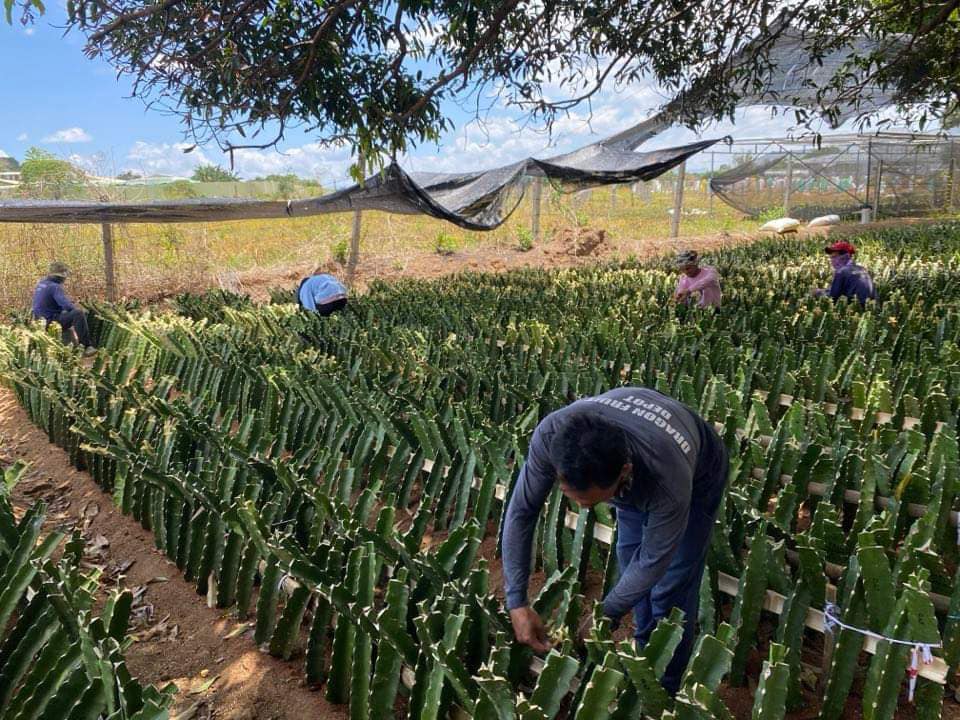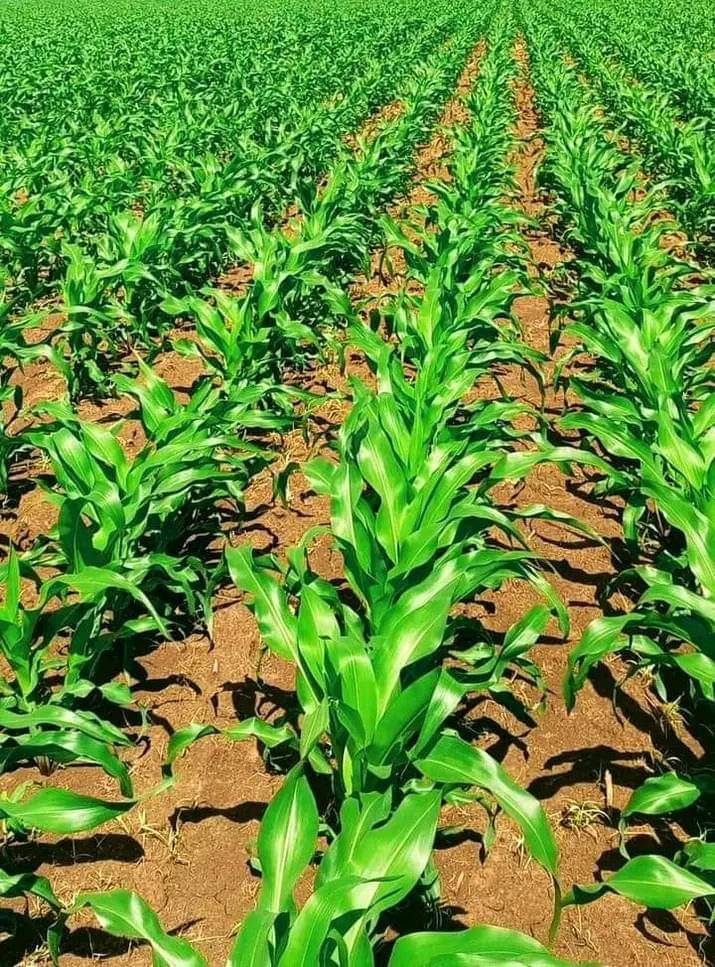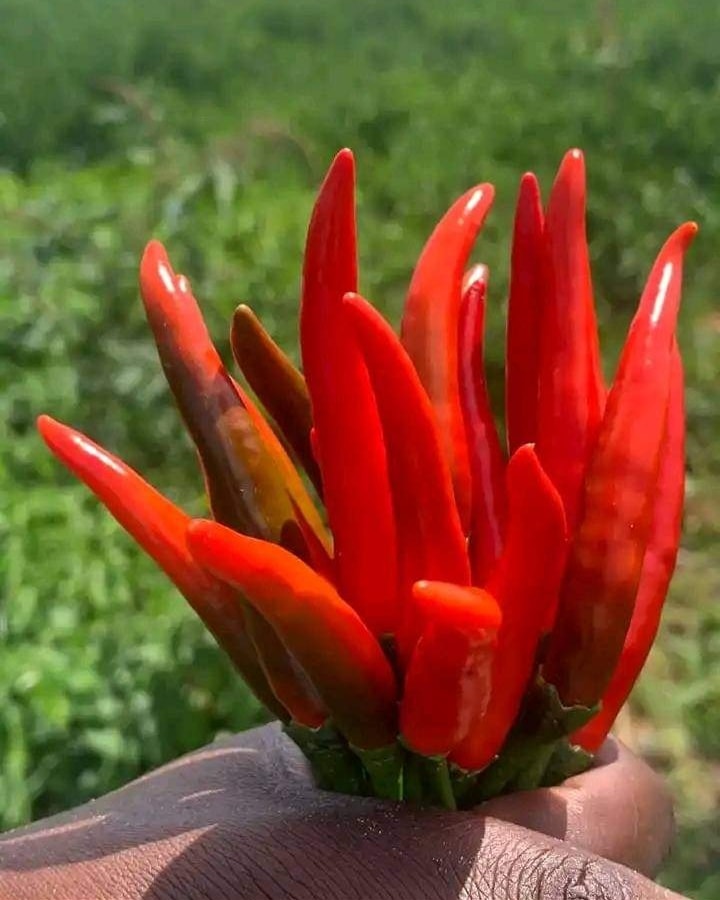Dragon Fruit Farming in Kenya | Seedlings Cost, Yield & Profit Per Acre
Dragon Fruit Farming in Kenya
Dragon fruit farming in Kenya has seen a significant rise due to its high nutritional value, unique characteristics, and growing market demand.
This exotic fruit, known for its vibrant appearance and refreshing taste, has become a sought-after superfood.
The country’s favorable climate and soil conditions make it an ideal location for cultivating this crop.
Dragon fruit farming has gained significant popularity in Kenya in recent years due to its unique characteristics, high nutritional value, and increasing market demand.
This comprehensive guide explores the various aspects of dragon fruit farming, from the benefits and varieties to cultivation techniques and potential challenges.
Benefits of Dragon Fruit Farming in Kenya
Dragon fruit farming offers numerous benefits for farmers in Kenya:
- Rising demand for dragon fruit in local and international markets presents a lucrative opportunity for commercial cultivation
- Vibrant appearance, refreshing taste, and rich nutrient content make dragon fruit a sought-after superfood
- High profitability stems from the premium prices it commands in the market
- Environmentally friendly as dragon fruit plants are well-suited to the Kenyan climate, requiring minimal water and exhibiting excellent drought tolerance

Dragon Fruit Varieties Suitable for Kenyan Climate
Several dragon fruit varieties thrive in favourable climatic conditions in Kenya:
- Hylocereus undatus (White-Fleshed Dragon Fruit): Vibrant pink or yellow skin with white flesh and black seeds, mildly sweet taste
- Hylocereus costaricensis (Red-Fleshed Dragon Fruit): Deep magenta or red skin and red or purplish flesh, slightly sweeter than white-fleshed variety
- Selenicereus megalanthus (Yellow-Fleshed Dragon Fruit): Bright yellow skin and white flesh speckled with small black seeds, subtly tangy flavour
Dragon Fruit Farming In Makueni
Makueni County has become a hub for dragon fruit farming in Kenya, with its favorable climate and soil conditions supporting the growth of this fruit. The region’s warm temperatures and well-drained soils create perfect conditions for growing this drought-tolerant crop.
Farmers in Makueni have reported successful harvests and high yields, contributing to the county’s agricultural diversity.
Other than Makueni being major dragon fruit farming areas in Kenya there are other areas like Meru, Laikipia, Malindi and Naivasha.
Being of the cactus family, dragon fruit can thrive in the arid and semi-arid areas of Makueni without much problem, as it does not require a lot of water.
Where To Sell Dragon Fruit In Kenya
Dragon fruit can be sold to fruit vendors, directly to consumers, or processed into various products like juice, wine, and jam. Farmers who plant mainly for value addition, especially wine, are also a potential market.
Farmers can also sell dragon fruit through various channels in Kenya, including local markets, supermarkets, and direct supply to restaurants and hotels. Export opportunities also exist, with markets in Europe and Asia showing interest in Kenyan dragon fruit.
Dragon Fruit Yield Per Acre Kenya
On average, dragon fruit yields in Kenya can range from 10 to 20 tons per acre annually, depending on farm management practices and environmental factors.
If planted with a spacing of 2×2 meters, an acre can accommodate 1,000 support posts, with two vines planted on each post, resulting in a plant population of 2,000 per acre. Each fruit could weigh an average of between 300 to 600 grams
- Dragon Yield Per Acre:
- Assuming a plant population of 2,400 plants per acre, experienced farmers report the following yields:
- First two years: Approximately 6,500 kg per acre.
- As the plant matures: Increases to 10,000 to 12,000 kg per acre.
- Each dragon fruit weighs around 300–600 grams.
- Profit Potential:
- An acre can yield around 20,000 kg of dragon fruit per year.
- At a price of approximately Ksh 800 per kilo, this translates to a potential profit of up to Ksh 16 million per acre (20,000 kg X Ksh. 800).
How Profitable Is Dragon Fruit Farming In Kenya
Dragon fruit farming in Kenya is highly profitable due to several factors. The fruit commands premium prices in both local and international markets.
Again, the cost of cultivation is relatively low, especially considering the crop’s drought tolerance and minimal water requirements. With proper management, farmers can achieve significant returns on investment within a few years.
Dragon fruit farming in Kenya can be highly profitable when managed well. Here are some key points:
Yield Per Acre:
Assuming a plant population of 2,000 plants per acre, experienced farmers report the following yields:
- First two years: Approximately 6,500 kg per acre.
- As the plant matures: Increases to 10,000 to 12,000 kg per acre.
- Each dragon fruit weighs around 300–1,000 grams.
Profit Potential:
- An acre can yield around 10,000 kg of dragon fruit per year.
- At a price of approximately Ksh 800 per kilo, this translates to a potential profit of up to Ksh 8 million per acre (10,000 kg X Ksh. 800).
Where To Get Dragon Fruit Seedlings In Kenya
Dragon fruit seedlings can be obtained from specialized nurseries or farms that propagate and sell them. Some notable sources include:
- Gravity Farm in Meru County, owned by Anthony Kinoti Mugambi, who is known as the ‘King of Dragon Fruit’
- Other reputable nurseries and farms across major dragon fruit farming areas in Kenya
Dragon Fruit Farming In Kenya Cost
The initial costs include land preparation, seedlings, support structures, and irrigation systems, ranging from Ksh 200,000 to Ksh 500,000 per acre.
The cost of dragon fruit farming in Kenya varies depending on factors such as land preparation, planting material, support structures, irrigation, and labor. Some key considerations include:
- Land preparation is relatively straightforward, involving setting up posts for support
- Dragon fruit plants require strong support structures like concrete or wooden posts for proper upright growth
- Irrigation is necessary, especially during planting, flowering, fruit development, and hot dry periods
- Fertilization demand is comparatively less compared to other fruit crops, and organic methods can be used
- Pest and disease management is important, with thrips, mealy bugs, slugs, and anthracnose being potential issues
Dragon Fruit Seedlings Price in Kenya
The cost of dragon fruit seedlings in Kenya varies depending on the variety and supplier. On average, seedlings can cost between Ksh 150 to Ksh 300 each.
Farmers should ensure they purchase healthy, disease-free seedlings from reputable nurseries to guarantee successful cultivation.
Dragon Fruit Price in Kenya
The market price for dragon fruit in Kenya fluctuates based on supply and demand. On average, the retail price ranges from Ksh 400 to Ksh 1000 per kilogram. Prices tend to be higher during off-peak seasons when the supply is limited.
Dragon Fruit Farming Profit Per Acre
The profit per acre from dragon fruit farming can be substantial. With an estimated yield of 10,000 to 15,000 kilograms per acre and an average market price of Ksh 400 per kilogram, farmers can potentially earn between Ksh 4,000,000 to Ksh 16,000,000 annually per acre.
Deducting production costs, the net profit remains significantly high, making it a lucrative venture.
Where to Get Dragon Fruit Seedlings in Kenya
Farmers can obtain dragon fruit seedlings from various agricultural nurseries and farms across Kenya. It is advisable to purchase seedlings from established nurseries that specialize in dragon fruit to ensure the quality and health of the plants. Some well-known sources include government agricultural research stations and private nurseries that offer certified seedlings.
Dragon Fruit Climate and Soil Requirements
Dragon fruit thrives in warm subtropical and tropical climates, making Kenya ideal for cultivation. The recommended temperature range is between 20°C and 35°C. These cacti require at least six hours of direct sunlight daily. They prefer well-drained sandy or loamy soil with a pH level between 6 and 7.5. Proper soil preparation, including organic matter incorporation and adequate drainage, is essential.
Propagation Techniques
Dragon fruit can be propagated through seeds, cuttings, or tissue culture, with cuttings being the most common method for commercial farming. Cuttings from mature plants are used to ensure faster growth and early fruiting.
Care and Maintenance
Dragon fruit plants require regular care to ensure healthy growth. This includes proper watering, fertilization, and pest control. The plants should be watered sparingly to prevent root rot. Organic fertilizers rich in nitrogen, phosphorus, and potassium promote vigorous growth. Pest and disease monitoring is crucial to address issues such as mealybugs and fungal infections promptly.
Harvesting and Post-Harvest Handling
Dragon fruits are typically ready for harvest 30 to 50 days after flowering. Harvesting should be done carefully to avoid damaging the fruit. Proper post-harvest handling, including careful storage and transportation, ensures the fruits reach consumers in optimal condition.
Support Structures in Dragon Fruit Farming
Support structures are essential for dragon fruit plants as they are vines and require support to grow upright. Properly aligned support structures ensure that the plants receive ample sunlight, which is vital for growth and fruit production.
Spacing and Planting Density
The recommended spacing for dragon fruit plants is 2 meters between lines and 2 meters from pole to pole within the line. Approximately 2,000 plants can be established per acre with two plants per pole. Variations in spacing can also be successful, as seen in some commercial farms.
Maturation Process
Dragon fruit vines propagated from cuttings can produce the first fruit in 1 to 1.5 years, while those grown from seeds take over six years. The flowering and fruiting process involves specific stages, including bud emergence, flowering, and fruit development, taking approximately 52 days from bud emergence to ripe fruit.
Ripening and Harvesting
Dragon fruits change color as they ripen, typically turning red. The ripening process takes three days. It is crucial to harvest only fully ripe fruits as they do not continue to ripen after harvesting. Premature harvesting can lead to less flavorful fruit.
Nutritional Benefits of Dragon Fruit
Dragon fruit is rich in essential vitamins and minerals, including vitamin C, antioxidants, and dietary fiber. It supports immune health, aids digestion, and contributes to overall well-being. The fruit’s unique taste and nutritional profile make it a valuable addition to various culinary applications.
FAQs
What Is Dragon Fruit Yield Per Acre in Kenya?
The yield of dragon fruit per acre in Kenya can be impressive with proper cultivation techniques. On average, farmers can expect to harvest between 10,000 to 20,000 kilograms of fruit per acre annually.
This high yield is attributed to the plant’s prolific fruiting ability and the favorable growing conditions in the region.
What are the different varieties of dragon fruit suitable for Kenyan climate?
Kenya is suitable for several dragon fruit varieties, including Hylocereus undatus (white-fleshed), Hylocereus costaricensis (red-fleshed), and Selenicereus megalanthus (yellow-fleshed).
What is the ideal temperature range for dragon fruit farming in Kenya?
The ideal temperature range is between 20°C and 35°C.
How much can I earn from dragon fruit farming per acre in Kenya?
Farmers can potentially earn between Ksh 4,000,000 to Ksh 16,000,000 annually per acre.
Where can I buy dragon fruit seedlings in Kenya?
Seedlings can be purchased from agricultural nurseries, government research stations, and private nurseries.
What are the initial costs of dragon fruit farming in Kenya?
The initial costs include land preparation, seedlings, support structures, and irrigation systems, ranging from Ksh 200,000 to Ksh 500,000 per acre.
How long does it take for dragon fruit plants to bear fruit?
Plants propagated from cuttings can bear fruit in 1 to 1.5 years, while those grown from seeds take over six years.
Conclusion
Dragon fruit farming in Kenya is a promising venture with high profitability and sustainable agricultural practices. With the right knowledge and resources, farmers can successfully cultivate this exotic fruit, contributing to the country’s agricultural diversity and economic growth.




